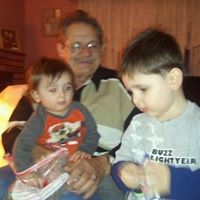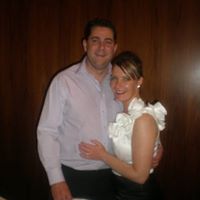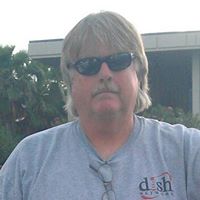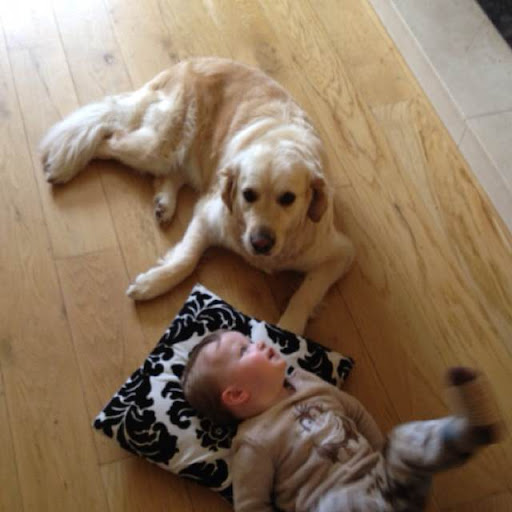Alan J Lyons
age ~86
from Marlton, NJ
Alan Lyons Phones & Addresses
- 9 Hibiscus Dr, Marlton, NJ 08053 • 8563960846
- 117 Mcintosh Rd, Cherry Hill, NJ 08003 • 8564282341
Work
-
Company:Herrick
-
Address:2 Park Avenue, New York, NY 10016
-
Specialities:Insurance - 100%
Education
-
Degree:Post graduate diploma
-
School / High School:University of Northumbria at Newcastle, England
Ranks
-
Licence:New York - Currently registered
-
Date:1998
Specialities
Corporate • Litigation • Class Action Defense • Insurance & Reinsurance • Insurance Coverage Litigation • Reinsurance Disputes • Transactional/Regulatory
Us Patents
-
Method And Apparatus For Aligning A Photo-Tunable Microlens
view source -
US Patent:6665127, Dec 16, 2003
-
Filed:Apr 30, 2002
-
Appl. No.:10/135973
-
Inventors:Zhenan Bao - Millburn NJ
Timofei Nikita Kroupenkine - Warren NJ
Alan Michael Lyons - New Providence NJ
Mary Louise Mandich - Martinsville NJ
Louis Thomas Manzione - Summit NJ
Elsa Reichmanis - Westfield NJ
Shu Yang - North Plainfield NJ -
Assignee:Lucent Technologies Inc. - Murray Hill NJ
-
International Classification:G02B 106
-
US Classification:359665
-
Abstract:A tunable microlens uses a layer of photo-conducting material which results in a voltage differential between at least one of a plurality of electrodes and a droplet of conducting liquid when a light beam is incident upon the photo-conducting material. Such droplet, which forms the optics of the microlens, moves toward an electrode with higher voltage relative to other electrodes in the microlens. Thus, for example, when the light beam is misaligned with the microlens, the voltage differential causes the droplet, and hence the microlens, to realign itself with the beam.
-
Apparatus For Thermal Management In A Portable Electronic Device
view source -
US Patent:6724626, Apr 20, 2004
-
Filed:Apr 30, 2003
-
Appl. No.:10/426462
-
Inventors:Marc Scott Hodes - New Providence NJ
Alan Michael Lyons - New Providence NJ -
Assignee:Lucent Technologies Inc. - Murray Hill NJ
-
International Classification:H05K 720
-
US Classification:361700, 361699, 257714, 165 804, 16510421
-
Abstract:A heat-dissipating device is disclosed for use in an electronic device. This heat dissipating device includes a reservoir for holding a substance in a liquid state (e. g. , water) and at least one heat transfer point for transferring heat from a heat source, such as a component in the electronic device, to the liquid substance. Heat causes the substance to transform into a gaseous state due to the transfer of thermal energy from the heat source to the substance. A gas permeable membrane is used to permit the substance to escape the reservoir when it is in a gaseous state while, at the same time, preventing the substance from escaping when it is in a liquid state.
-
Method And Apparatus For Intra-Layer Transitions And Connector Launch In Multilayer Circuit Boards
view source -
US Patent:7013452, Mar 14, 2006
-
Filed:Mar 24, 2003
-
Appl. No.:10/395956
-
Inventors:Torben Baras - New Providence NJ, US
Alan Michael Lyons - New Providence NJ, US
Carsten Metz - Chatham Township, Morris County NJ, US -
Assignee:Lucent Technologies Inc. - Murray Hill NJ
-
International Classification:G06F 17/50
-
US Classification:716 15
-
Abstract:An apparatus is disclosed that substantially reduces or eliminates the resonance that occurs in vias that connect the layers of a printed circuit board by electrically coupling a first transmission line in a circuit board to a second transmission line in a circuit board by two electrical paths having substantially the same electrical length. The two electrical paths are created by connecting the first transmission line to a first via which is in turn connected to a second via having a second transmission line with a plurality of connecting electrical paths between the two vias. In one illustrative embodiment, electrical traces are used to connect the top of the first via to the top of the second via and the bottom of the first via to the bottom of the second via.
-
Light-Weight Signal Transmission Lines And Radio Frequency Antenna System
view source -
US Patent:7095377, Aug 22, 2006
-
Filed:Oct 30, 2003
-
Appl. No.:10/697498
-
Inventors:Alan Michael Lyons - New Providence NJ, US
Carsten Metz - Township Chatham, Morris County NJ, US -
Assignee:Lucent Technologies Inc. - Murray Hill NJ
-
International Classification:H01Q 1/34
-
US Classification:343709
-
Abstract:A light weight antenna system and corresponding lightweight transmission lines are disclosed that are characterized as having an extremely light weight relative to prior such systems and lines. An inflatable body having an inner surface connected to an outer surface with a plurality of support structures, such as connecting tubes. Antenna elements are disposed on the outer surface of the inflatable body to form, for example, a phased array antenna. Coaxial transmission lines are used to transmit signals to and from an antenna element and are, in one embodiment, created by disposing an inner conductor within the aforementioned connecting tubes. Such a transmission line may be utilized in a number of applications, such as to connect a base station to an antenna system of a wireless communications network. In another embodiment, quasi coaxial transmission lines are formed by disposing flexible membrane shields around a transmission elements.
-
Techniques For Microchannel Cooling
view source -
US Patent:7204298, Apr 17, 2007
-
Filed:Nov 24, 2004
-
Appl. No.:10/997795
-
Inventors:Marc Scott Hodes - New Providence NJ, US
Paul Robert Kolodner - Hoboken NJ, US
Thomas Nikita Krupenkin - Warren NJ, US
Wonsuck Lee - Basking Ridge NJ, US
Alan Michael Lyons - New Providence NJ, US
Todd Richard Salamon - Chatham NJ, US
Joseph Ashley Taylor - Springfield NJ, US
Donald P. Weiss - Cresskill NJ, US -
Assignee:Lucent Technologies Inc. - Murray Hill NJ
-
International Classification:F28F 13/00
-
US Classification:165 804, 361699
-
Abstract:Techniques for heat transfer are provided. In one aspect of the invention, a heat-transfer device is provided. The heat-transfer device comprises one or more microchannels suitable for containing a heat-transfer fluid, one or more of the microchannels having protruding structures on at least one inner surface thereof configured to affect flow of the heat-transfer fluid through the one or more microchannels. The structures may comprise posts coated with a hydrophobic coating.
-
Light-Weight Signal Transmission Lines And Radio Frequency Antenna System
view source -
US Patent:7425930, Sep 16, 2008
-
Filed:Apr 27, 2005
-
Appl. No.:11/115636
-
Inventors:Alan Michael Lyons - New Providence NJ, US
Carsten Metz - Chatham Township, Morris County NJ, US -
Assignee:Lucent Technologies Inc. - Murray Hill NJ
-
International Classification:H01Q 9/38
H01P 3/12 -
US Classification:343830, 343771, 333239, 333248
-
Abstract:A light weight antenna system and corresponding lightweight transmission lines are disclosed that are characterized as having an extremely light weight relative to prior such systems and lines. An inflatable body having an inner surface connected to an outer surface with a plurality of support structures, such as connecting tubes. Antenna elements are disposed on the outer surface of the inflatable body to form, for example, a phased array antenna. Coaxial transmission lines are used to transmit signals to and from an antenna element and are, in one embodiment, created by disposing an inner conductor within the aforementioned connecting tubes. Such a transmission line may be utilized in a number of applications, such as to connect a base station to an antenna system of a wireless communications network. In another embodiment, quasi coaxial transmission lines are formed by disposing flexible membrane shields around a transmission elements.
-
Structured Dielectric For Coaxial Cable
view source -
US Patent:7674981, Mar 9, 2010
-
Filed:Sep 25, 2008
-
Appl. No.:12/237855
-
Inventors:Jan Hesselbarth - Zurich, CH
Erhard Mahlandt - Laatzen, DE
Alan Michael Lyons - New Providence NJ, US -
Assignee:Alcatel-Lucent USA Inc. - Murray Hill NJ
-
International Classification:H01B 7/00
-
US Classification:174110R, 174112, 174113 AS, 174 28
-
Abstract:A geometrically-structured coaxial cable may prevent infiltration of water vapor and other contaminants by using a closed cell structure. The cable may be fabricated by wrapping bubble tape around its central conductor. Alternatively, plastic may be extruded through channels to create a plurality of layers. In either case, these layers are staggered in a zig-zag pattern to ensure that no radial spokes connect the inner and outer conductors of the coaxial cable without passing through a plurality of dielectric layers.
-
Reversibly-Activated Nanostructured Battery
view source -
US Patent:7749646, Jul 6, 2010
-
Filed:Mar 18, 2004
-
Appl. No.:10/803641
-
Inventors:Marc Scott Hodes - New Providence NJ, US
Paul Robert Kolodner - Hoboken NJ, US
Timofei Nikita Kroupenkine - Warren NJ, US
Alan Michael Lyons - New Providence NJ, US
Mary Louise Mandich - Martinsville NJ, US
Joseph Ashley Taylor - Springfield NJ, US
Donald Weiss - Cresskill NJ, US -
Assignee:Alcatel-Lucent USA Inc. - Murray Hill NJ
-
International Classification:H01M 10/50
-
US Classification:429112, 429 62, 429118, 977948
-
Abstract:A battery having a nanostructured battery electrode is disclosed wherein it is possible to reverse the contact of the electrolyte with the battery electrode and, thus, to return a battery to a reserve state after it has been used to generate current. In order to achieve this reversibility, the nanostructures on the battery electrode comprise a plurality of closed cells and the pressure within the enclosed cells is varied. In a first embodiment, the pressure is varied by varying the temperature of a fluid within the cells by, for example, applying a voltage to electrodes disposed within said cells. In a second illustrative embodiment, once the battery has been fully discharged, the battery is recharged and then the electrolyte fluid is expelled from the cells in a way such that it is no longer in contact with the battery electrode.
Resumes

Professor, Department Of Chemistry
view sourcePosition:
Professor at College of Staten Island - CUNY
Location:
Greater New York City Area
Industry:
Research
Work:
College of Staten Island - CUNY since Sep 2008
Professor
Alcatel-Lucent 2006 - 2008
Group Leader Thermal Management Research
Bell Labs Lucent Technologies 1980 - 2008
DMTS
Professor
Alcatel-Lucent 2006 - 2008
Group Leader Thermal Management Research
Bell Labs Lucent Technologies 1980 - 2008
DMTS
Education:
Brown University
ScB, Chemistry Polytechnic University
PhD, Chemistry
ScB, Chemistry Polytechnic University
PhD, Chemistry

Alan Lyons
view sourceLocation:
Greater New York City Area
Industry:
Law Practice
Skills:
Arbitration
Litigation
Reinsurance
Insurance
Commercial Litigation
Litigation
Reinsurance
Insurance
Commercial Litigation

Alan Lyons
view sourceLocation:
United States

Lawyer At Herrick, Feinstein Llp
view sourceLocation:
Greater New York City Area
Industry:
Law Practice

Alan Lyons
view sourceLocation:
United States
Lawyers & Attorneys

Alan Robert Lyons, New York NY - Lawyer
view sourceAddress:
Herrick
2 Park Avenue, New York, NY 10016
2 Park Avenue, New York, NY 10016
Licenses:
New York - Currently registered 1998
Education:
University of Northumbria at Newcastle, England
Degree - Post graduate diploma
Graduated - 1994
University of Northumbria at Newcastle, England
Degree - LL.B - Bachelor of Laws
Graduated - 1993
Degree - Post graduate diploma
Graduated - 1994
University of Northumbria at Newcastle, England
Degree - LL.B - Bachelor of Laws
Graduated - 1993
Specialties:
Insurance - 100%

Alan Lyons - Lawyer
view sourceOffice:
Herrick, Feinstein LLP
Specialties:
Corporate
Litigation
Class Action Defense
Insurance & Reinsurance
Insurance Coverage Litigation
Reinsurance Disputes
Transactional/Regulatory
Litigation
Class Action Defense
Insurance & Reinsurance
Insurance Coverage Litigation
Reinsurance Disputes
Transactional/Regulatory
ISLN:
913232604
Admitted:
1998
University:
College of Law, York, England, 1994
Law School:
University of Northumbria at Newcastle, England, LL.B., 1993
Classmates

Alan Lyons
view sourceSchools:
St. Gregory the Great School San Antonio TX 1963-1971
Community:
Robert Klaus, Kathryn Seabrook

Alan Lyons
view sourceSchools:
New Westminster Secondary School New Westminster Saudi Arabia 1963-1967
Community:
Kirk Smith

Alan Lyons
view sourceSchools:
Bessborough Drive Public School Toronto Morocco 1985-1987
Community:
Gabe Nemeth, Edward Collins, Gordon Postill

St. Gregory the Great Sch...
view sourceGraduates:
Alan Lyons (1963-1971),
Christopher Saldana (1981-1989),
Kitty Frazier (1955-1958),
Sarah Crowley (1987-1990)
Christopher Saldana (1981-1989),
Kitty Frazier (1955-1958),
Sarah Crowley (1987-1990)

Carlyle High School, Carl...
view sourceGraduates:
Allen Lyons (1970-1974),
Robert Browning (1982-1991),
Lisa Ilges (1987-1991),
Mary Dubach (1984-1988),
Colin Hanke (1992-1996)
Robert Browning (1982-1991),
Lisa Ilges (1987-1991),
Mary Dubach (1984-1988),
Colin Hanke (1992-1996)
Youtube
Flickr
Plaxo

Alan Lyons
view sourceDublinDIT Digital Community Programme

Alan Lyons
view sourcehelius energy

Alan Lyons
view source
Alan Lyons
view source
Alan Lyons
view source
Alan Lyons
view source
Alan Lyons
view source
Alan Lyons
view source
Alan Lyons
view source
Alan Lyons
view sourceMyspace
Googleplus

Alan Lyons
Work:
Asterisky.com - Staff Writer
Education:
McDaniel College - Political Science and International Studies

Alan Lyons
Work:
CUNY - College of Staten Island - Professor

Alan Lyons

Alan Lyons

Alan Lyons

Alan Lyons

Alan Lyons

Alan Lyons
Get Report for Alan J Lyons from Marlton, NJ, age ~86


![[Webinar] Emotional Intelligence and High Performa... [Webinar] Emotional Intelligence and High Performa...](https://i.ytimg.com/vi/w7Do7a2kDLE/hq720.jpg?sqp=-oaymwEcCNAFEJQDSFXyq4qpAw4IARUAAIhCGAFwAcABBg==&rs=AOn4CLClUMKQTkPjTqoqE64lBFoBnVcXNQ)


![[Webinar] Inside High Performing Teams | with Alan... [Webinar] Inside High Performing Teams | with Alan...](https://i.ytimg.com/vi/r5kXZFRE3mo/hqdefault.jpg?sqp=-oaymwEcCOADEI4CSFXyq4qpAw4IARUAAIhCGAFwAcABBg==&rs=AOn4CLBopKisPULCxlIWr6gKa-LWEZkirg)










